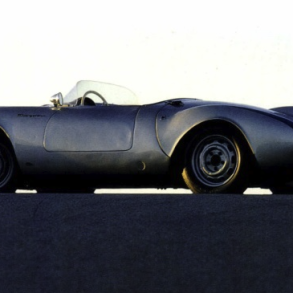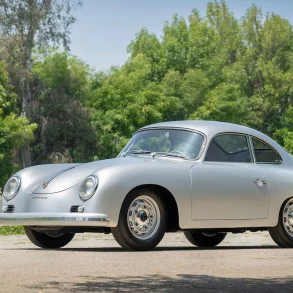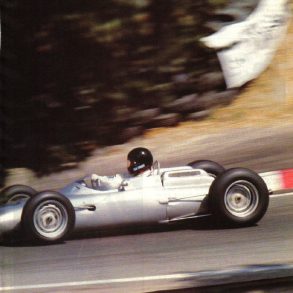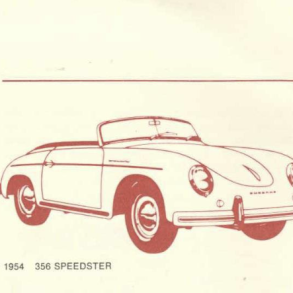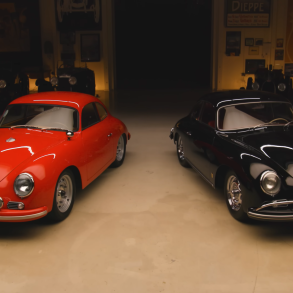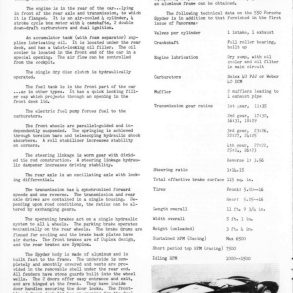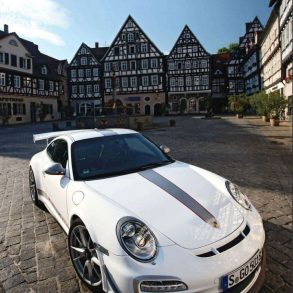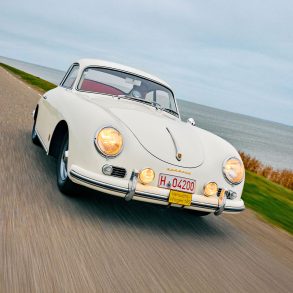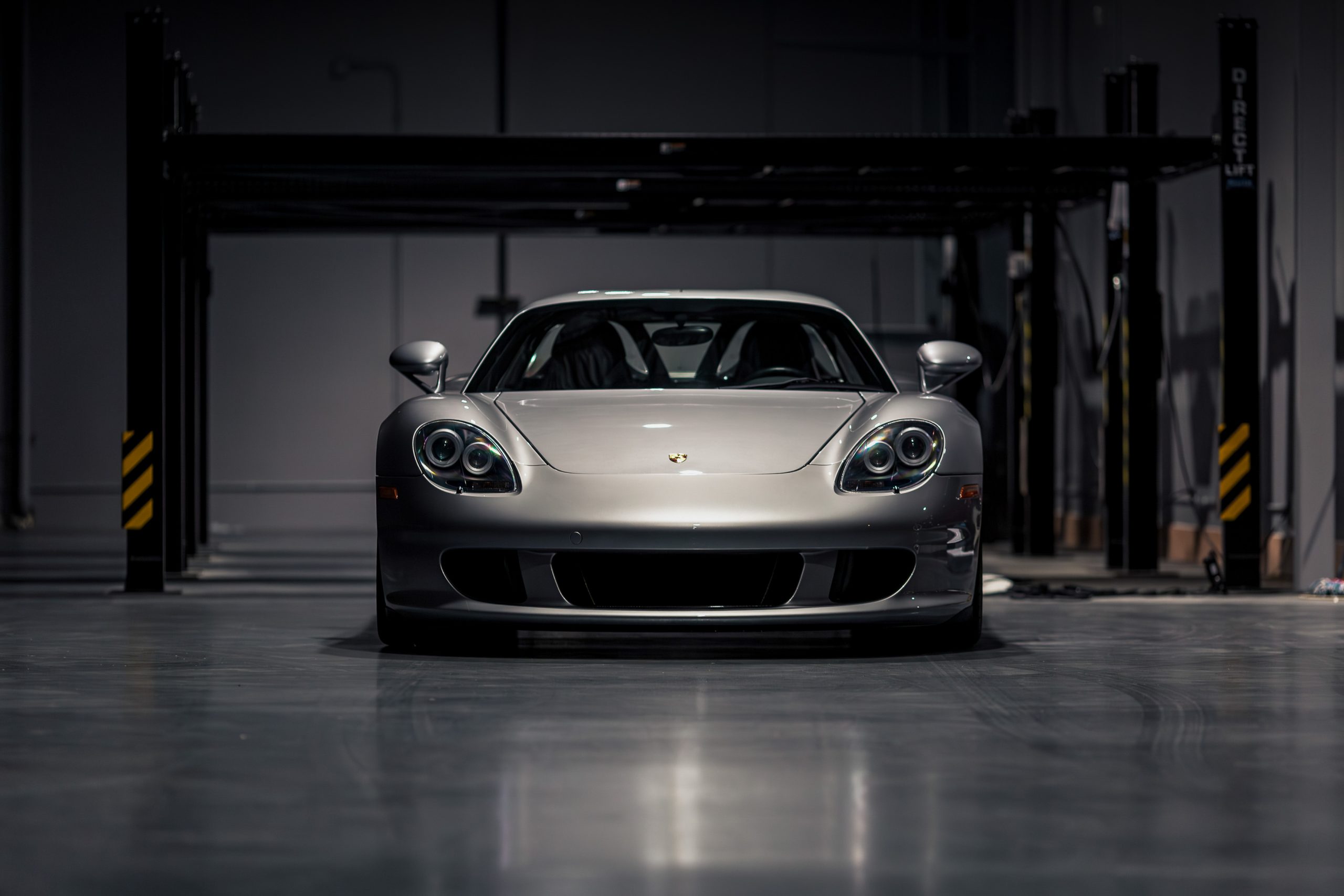Let’s take a look inside. Everything is very neat, tidy, and to the point—nothing superfluous, nothing conspicuous, nothing designed for show. Three discreet latches for the soft top. A large steering wheel, like that of a good truck, with a rather thin wooden rim, sits in front of the driver. A thin, almost invisible grab handle on the dashboard sits in front of the passenger: something to grab onto if your nerves give in. The pedals are a bit unusual: they stick out almost vertically. The seats look comfortable; you’re tempted to check them out, but how are they actually? Yes, and they really are comfortable—you don’t want to get out.
Well, since we’re already behind the wheel, we might as well start the engine—at least listen to its voice… but where’s the ignition switch, on the floor or something? Ah, there it is—to the left of the steering wheel, not the right, as is usually the case! That’s also a pretty good idea: start the engine with your left hand, and your right is already on the gearshift—squeeze the clutch and off you go. The key is unusually small… where should it go, which way? This way? Right, that’s it: the flat-four engine behind the seat awoke, cleared its throat, and announced in a sleepy, hoarse whisper that it was “at our service.” We could get going.
After the first twenty meters, any doubts vanish. Yes, this car is capable of 200 kilometers per hour, but you don’t necessarily need to reach those speeds to get the most out of it: it’s equally good in all situations and under any circumstances. You sit quite low, but there’s surprisingly plenty of room in the cabin. The engine is certainly audible, but the sound of the tires on the wet pavement is far more audible—it’s just rained, there are no puddles, but the road hasn’t had time to dry yet.
Thoughts arise: the new Boxster has just come out—which is better, in the grand scheme of things: this new model or this traditional old Porsche? And—secondly: it’s time to lose weight, lose weight, shed that extra weight! Next to this car, which, despite its venerable age, doesn’t have a single extra kilo, you can’t help but suck in your stomach—not because it’s cramped or uncomfortable, but simply to fit in.
Let’s take a look inside. Everything is very neat, tidy, and to the point—nothing superfluous, nothing conspicuous, nothing designed for show. Three discreet latches hold the soft top. A large steering wheel, like the one on a good truck, with a rather thin wooden rim, sits in front of the driver. A thin, almost invisible grab handle on the dashboard sits in front of the passenger: something to grab onto if your nerves give out. The pedals are a bit unusual: they stick out almost vertically. The seats look comfortable; you’re tempted to check them out, but how are they actually? And they really are comfortable—you don’t want to get out.
Well, since we’re already behind the wheel, we might as well start the engine—at least listen to its voice… But where’s the ignition switch, on the floor or something? Ah, there it is—to the left of the steering wheel, not the usual right! That’s also pretty much the right idea: start the engine with your left hand, and your right hand is already on the gearshift—squeeze the clutch, and off you go. The key is unusually small… where should it go, which way? This way? Right, this way: the flat-four engine behind the seat awoke, cleared its throat, and announced in a hoarse, sleepy half-whisper that it was “at our service.” We could get going.
After the first twenty meters, any doubts vanished. Yes, this car is capable of two hundred kilometers per hour—but you don’t necessarily need to accelerate to such speeds to get the most out of it: it’s equally good in any situation and under any circumstances. You sit quite low, but there’s a surprising amount of room in the cabin. The engine is audible, of course, but the sound of the tires on wet pavement is even more noticeable—it’s rained recently, there are no puddles, but the road hasn’t had time to dry yet.
This brings up thoughts like these: the new Boxster has just come out—which is better, in the grand scheme of things: this new model or this traditional old Porsche? And secondly: it’s time to lose weight, lose weight, shed that extra weight! Next to this car, which, despite its venerable age, doesn’t have a single extra kilogram, you can’t help but want to suck in your stomach—not because it’s cramped or uncomfortable, but simply to fit in.
…The air-cooled, four-cam engine was first designed for Porsche in the mid-1950s by renowned engine designer Dr. Ernst Fuhrmann. This power plant was originally intended for use in the Spyder racing car, but Fuhrmann specifically designed it to fit seamlessly into the engine bay of the rear-engine production Porsche 356. Thus, the foundations were laid for the most powerful and, consequently, fastest Porsche model, named the Carrera, in honor of its stunning success at the 1954 Carrera Panamericana Mexican road race. The Carrera engine was demonstrated at the 1955 Frankfurt Motor Show; it produced 100 hp at 6,200 rpm—a full quarter more than the most powerful modification of the standard 356 engine! Seven years later, in 1962, an even more powerful version appeared: the Carrera 2.
This engine’s displacement was increased to 1966 cc by lengthening the piston stroke, producing 130 hp at the same rpm. The 356 series cars with this engine were among the fastest passenger cars: 0-60 mph (96 km/h) in under 9 seconds, with a top speed of 125 mph (201 km/h)! At that time, in the early 1960s, only the Italian monsters with twice the displacement were faster.
A fast car needed adequate brakes, and the Carrera 2 cars used a modified fixed-stator system from a racing car that Porsche had prepared for Formula 1 racing. The disc brakes were manufactured and supplied by the renowned company Teves, commissioned by Porsche.
Unfortunately, the Porsche Carrera 2’s production life was very short. The following year, the now-familiar 911 took the place of the 356 series. Consequently, only 436 Carrera 2s were ever produced, making them a rare find. Large and expensive.
Based on materials from Automedia



